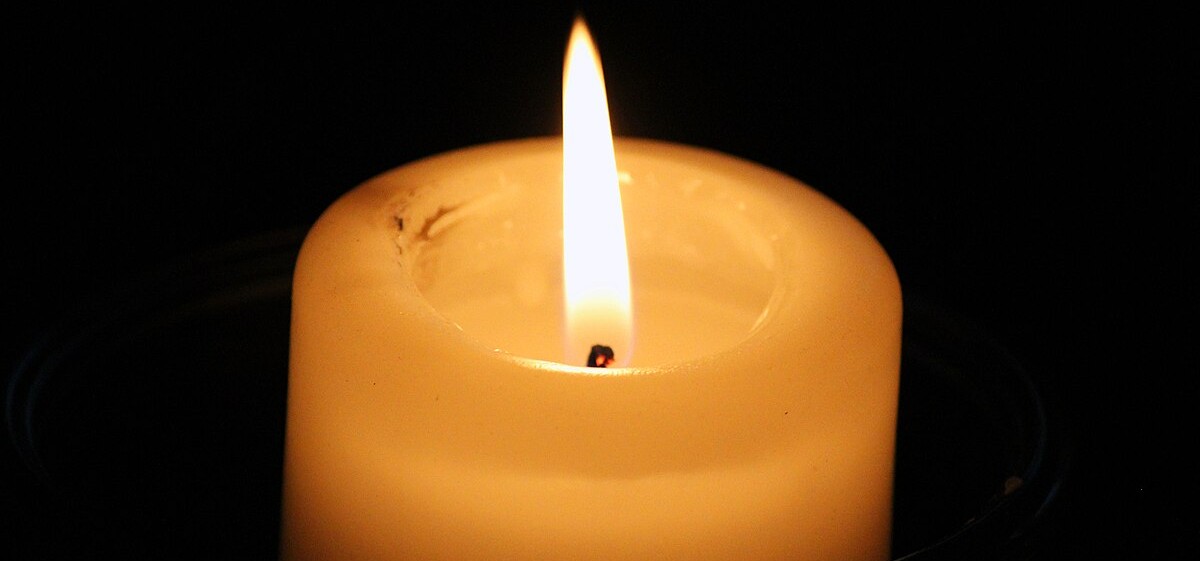The Exsultet
Elizabeth Harrington

The Lucernarium or Solemn Beginning of the Vigil (a bland title for such a visually exciting and captivating ritual!) is distinctly and deliberately different from the usual entrance procession at Mass.
We gather around a blazing fire (Missal rubrics); a shiny, large Easter candle is brought forward, engraved and grains of incense inserted; we process into a dark church; then the space begins to sparkle as people’s candles are lit from the Easter candle; the candle and book are incensed. All so powerfully engaging. And then we stand and listen to the deacon or priest or cantor chant, sometimes poorly, something that seems to go on and on. This great Easter Proclamation can be an anti-climax.
The Exsultet (the opening word in Latin by which the proclamation is more commonly known) is arguably the best piece of poetry in our liturgical books, employing rich imagery to tell of the greatest events of our salvation story. But it is long and challenging, and needs to be proclaimed well if it is to be prayed well.
Unfortunately, some parishes have succumbed to the temptation to use paraphrased versions or substitute a hymn for the Exsultet. No known hymn does justice to this powerful text and there is no better musical setting for it than the Gregorian melody found in the Missal. The solution is not to eliminate or substitute, but to find someone who is prepared to spend time practising the chant so that it is proclaimed well. A first step in this is to have an understanding of the nature and structure of the Exsultet.
Like all the texts in the Missal, the version used for the past 40 years has been revised. Longer and shorter forms are provided with the shorter – the one usually used – containing eighty percent of the text of the longer version. The revised translation retains startling, seemingly contradictory expressions such as happy fault and necessary sin. The role of bees in producing the wax paschal candle, omitted in the previous Missal, has been reintroduced. More ancient texts of the prayer went to even greater lengths to extol the contribution of these industrious insects.
In the Exsultet, an initial cosmic shout of joyful exultation leads to the dialogue familiar from the Eucharistic Prayer, culminating in the phrase it is right and just. The rest of the text can be broken into three sections: the proclamation of what God has done as Creator; an instruction about the mystery at the heart of Easter when Christ, after his death, passed among the dead to scatter their darkness and transform their night into day; and thanksgiving for this act of redemption whose effects reach all creation through every age.
The repetition of the phrase this is the night reminds us that in liturgy we are not simply remembering or recreating past events; rather, we are experiencing the original moment and are present to the saving acts that are recounted. As we celebrate the Easter Vigil the waters part, the pillar of light leads the way and Christ is raised from the tomb.
There are many websites which enable those who will chant the Exsultet the opportunity to listen to the text sung and practise it. As for those who listen to the Exsultet proclaimed, it is important to understand that it is impossible to take everything in with a prayer as long as this. Some words and images will touch you more than others. What speaks to you one year may not be what touches you when it is proclaimed again the following Easter.
EXULT, LET THEM EXULT
This article was originally published in Liturgy News Vol 38(1) March 2008. Reprinted with permission.
Image Attribution - Lit Candle, Rolf Schweizer Fotografie
